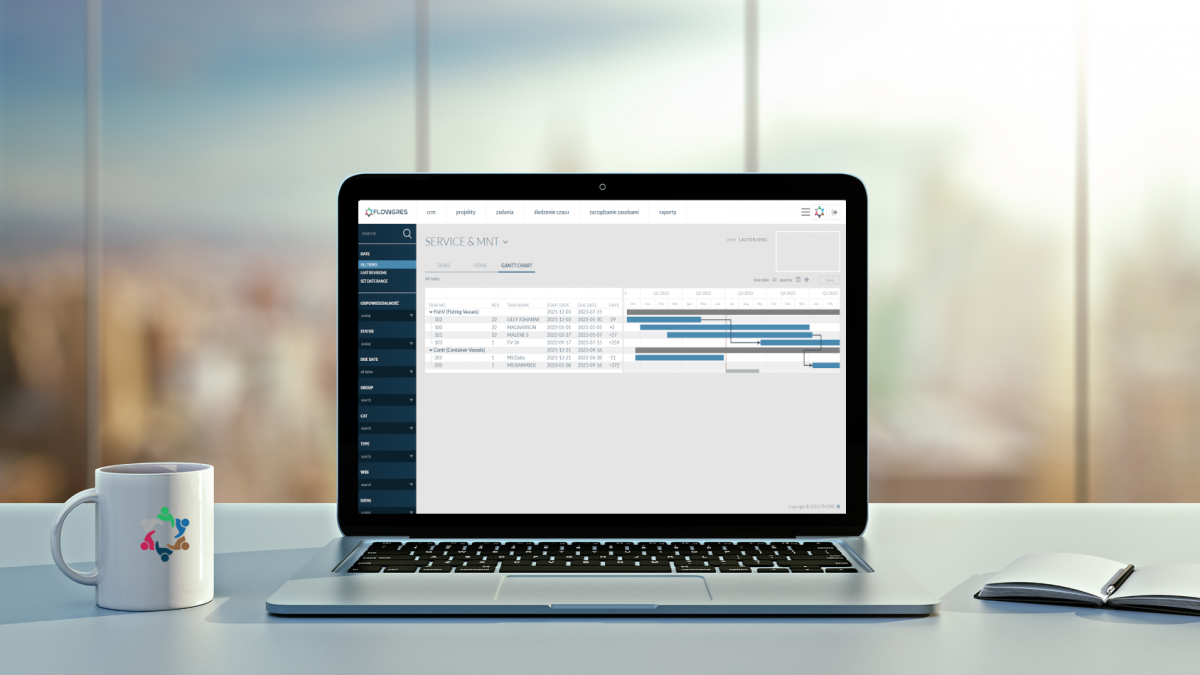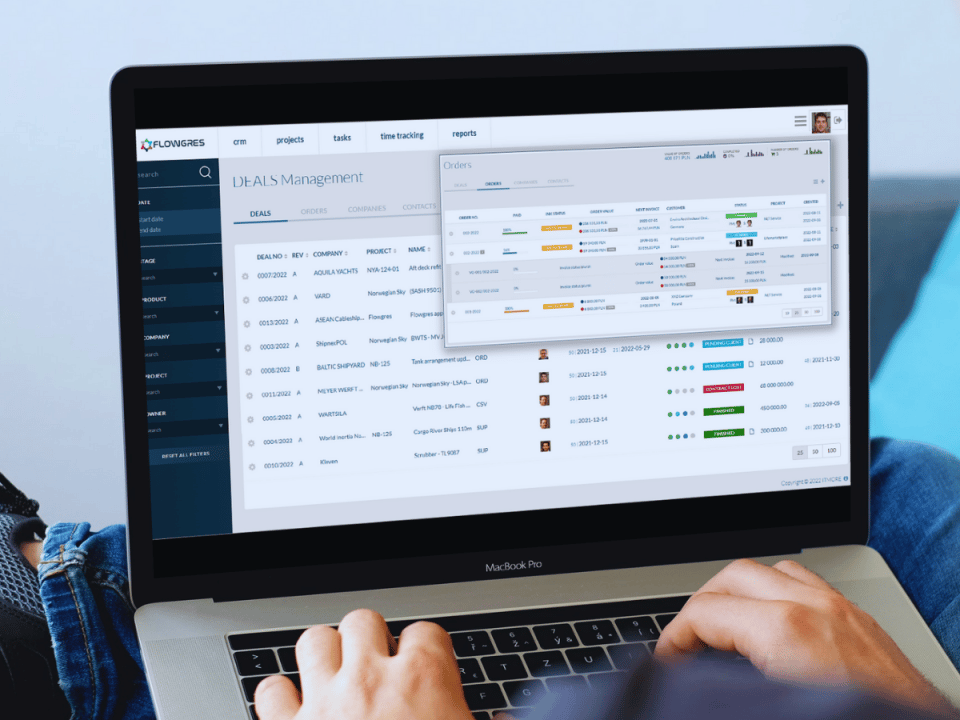
10 tips for efficient project management
30 August 2022
How to track and settle remote working time
4 October 2022Project time management - Gantt chart
Quite a frequent problem nowadays is failure to meet deadlines related to the implementation of projects. One of the chapters of Eliyahu M. Goldratt's book "The Critical Chain", entitled "Causes of Delays", begins with this sentence: "The topic of today's class - I said in a calm voice - is the size of the safety margin that employees assume when planning each task in the project."
In this article, I will look at this problem, as well as present tools such as Flowgres and techniques thanks to which we are able to properly monitor the deadlines of projects.
The causes of problems during the implementation of projects
Project managers struggle with many problems affecting the implementation of projects. The number of unforeseen situations that may arise during the conduct of projects is huge. Some of them are:
- Unrealistic project completion date.
- Erroneous, overestimated assumption about the time needed to complete individual tasks.
- Upset of employees who are required to work on multiple tasks simultaneously.
- Improper definition of requirements.
- A carelessly prepared project plan.
- Irregular control of the project implementation.
Why are we wasting projects’ time?
Quite often, even though the project was planned with a huge time safety margin on tasks, we are still not able to meet the deadlines. There may be many factors influencing delays, but the ones repeated most often are:
1. Multitasking

The idea of doing more than one activity at the same time. When we focus on two tasks simultaneously, the quality of their implementation decreases. In fact, it is impossible to work on several tasks at the same time because our brain switches our attention from one task to another.
The Russian psychologist Bluma Zeigarnik in a study from 1927 showed that people remember interrupted tasks better than completed tasks. In the frontal lobe of the brain, just behind the forehead, is an area called the Brodmann 10 field. Many studies show that this is the site of a person's ability to leave an activity and then come back to it later and resume where we left it off. This gives the impression that we can perform several activities at the same time.
2. Procrastination
When one waits with the execution of a task until the last day dedicated to its implementation.
If we have seven days for a given task, we will do it either on the seventh day or after the deadline. That is why it is important to be disciplined, to plan ones activities and fulfill the duties on the previously set dates.

3. Project delays are cumulative, saved time is not
When one waits with the execution of a task until the last day dedicated to its implementation.
If we have seven days for a given task, we will do it either on the seventh day or after the deadline. That is why it is important to be disciplined, to plan ones activities and fulfill the duties on the previously set dates.
What solutions can help to manage the project time?
With careful planning we can prevent delays in projects. However, we cannot predict all the variables. One of the ways to handle multiple project variables is Gantt chart. It is a project management tool that presents a project schedule on a timeline. Typically, it has two sections: the left side shows a list of tasks, and the right side contains a timeline with schedule bars that visualize tasks. The Gantt Chart may also include task start and finish dates, milestones, task dependencies, and people assigned to tasks.
I want to use a Gantt chart, what is the best tool to use?
In solving project problems, it is good to use a tool that allows planning and controlling of all tasks in the project and thus save the project time. One of the tools that can help you with this is Flowgres.
Flowgres is a project management platform dedicated to various industries. Below, I will present some of the possibilities the Flowgres offers.
Plan your projects
The Gantt chart is a great tool in which you can schedule your project. You can plan all design elements step by step in a simple and accessible way. By moving groups of tasks and tasks on the timeline, you can adjust the entire timeliness of the project in just a few tens of seconds.
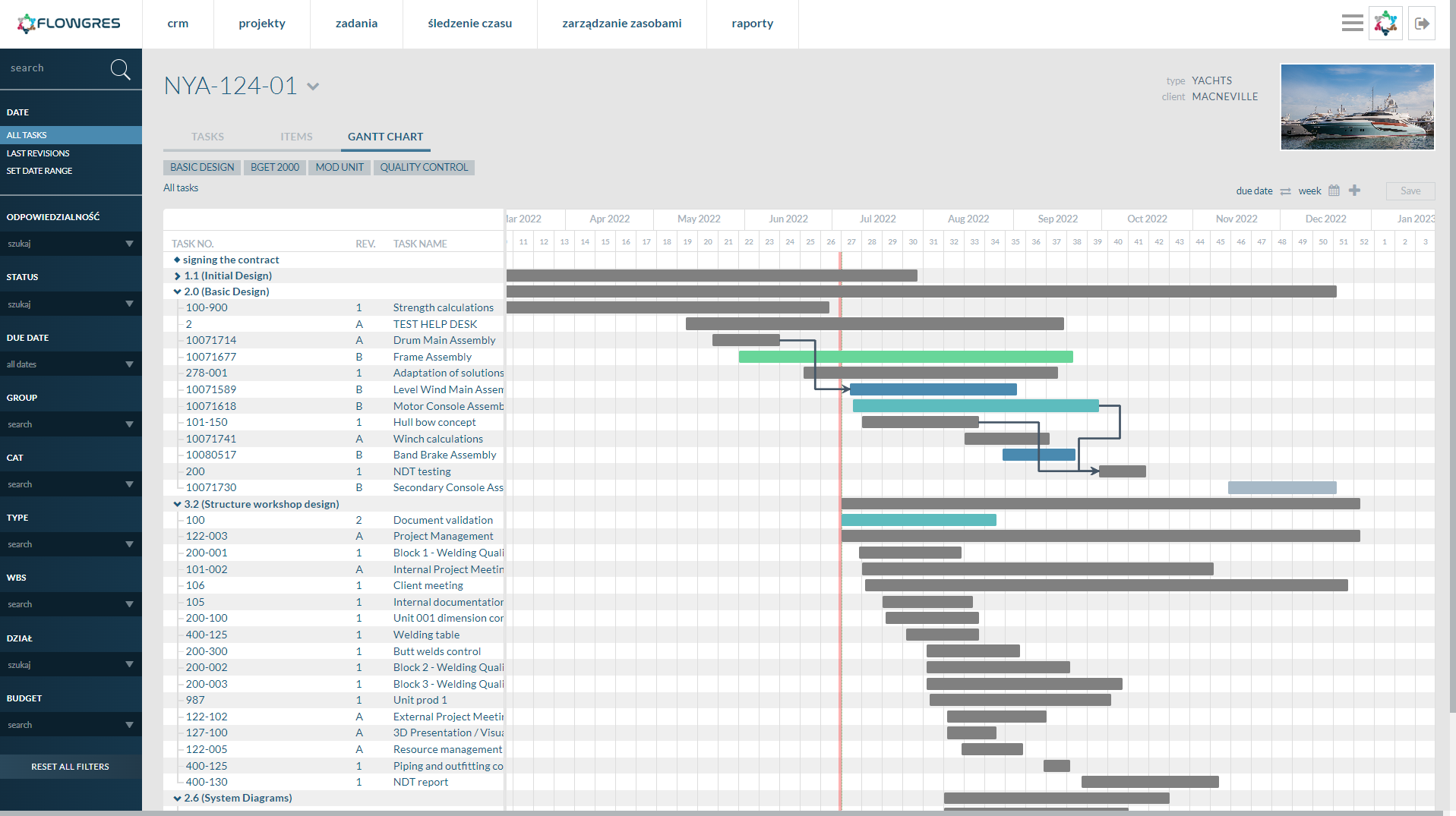
Create dependencies between tasks in projects
Have you ever had one task delaying another one? At Flowgres, there is a solution for this. You can create a relationship between individual tasks, thanks to which, if a task is delayed, the starting date of the dependent task will automatically be postponed.
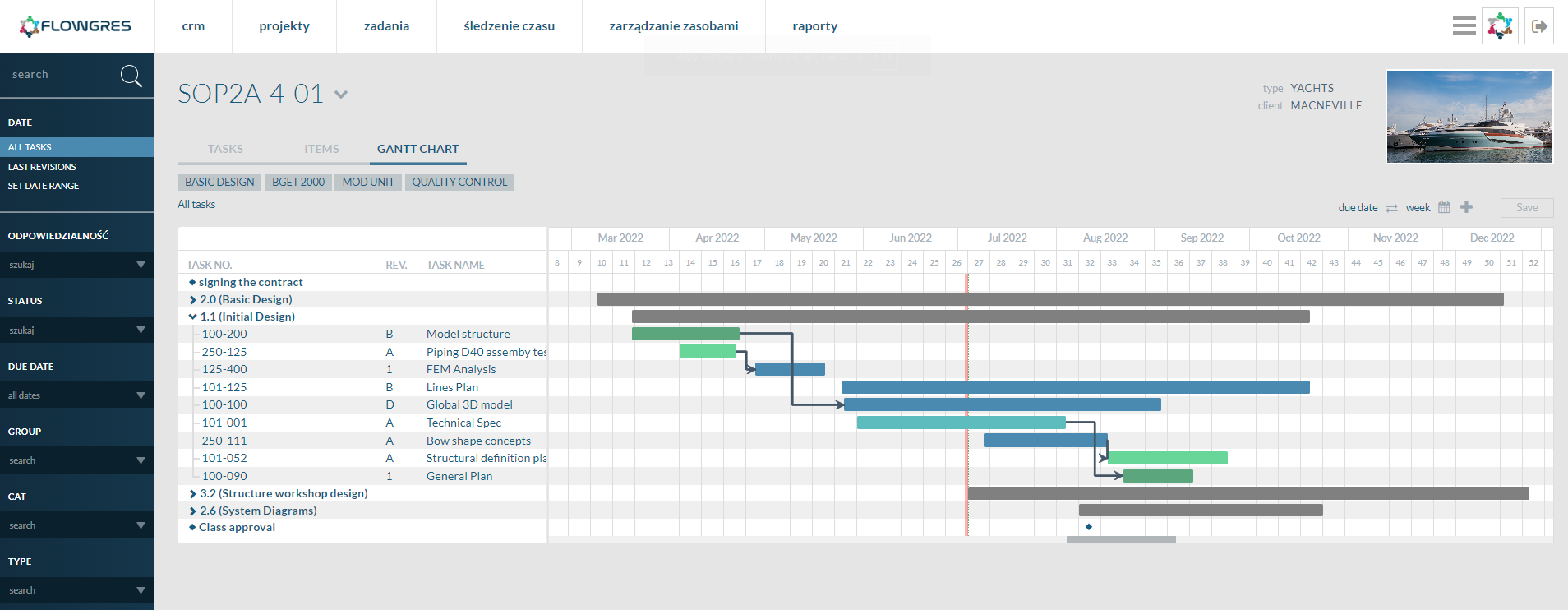
Create custom filters tailored to your needs
The Flowgres system gives you the possibility to adjust the Gantt chart view mode to your needs.
Thanks to the extensive view of filters, you can display information that is relevant to you at the time.
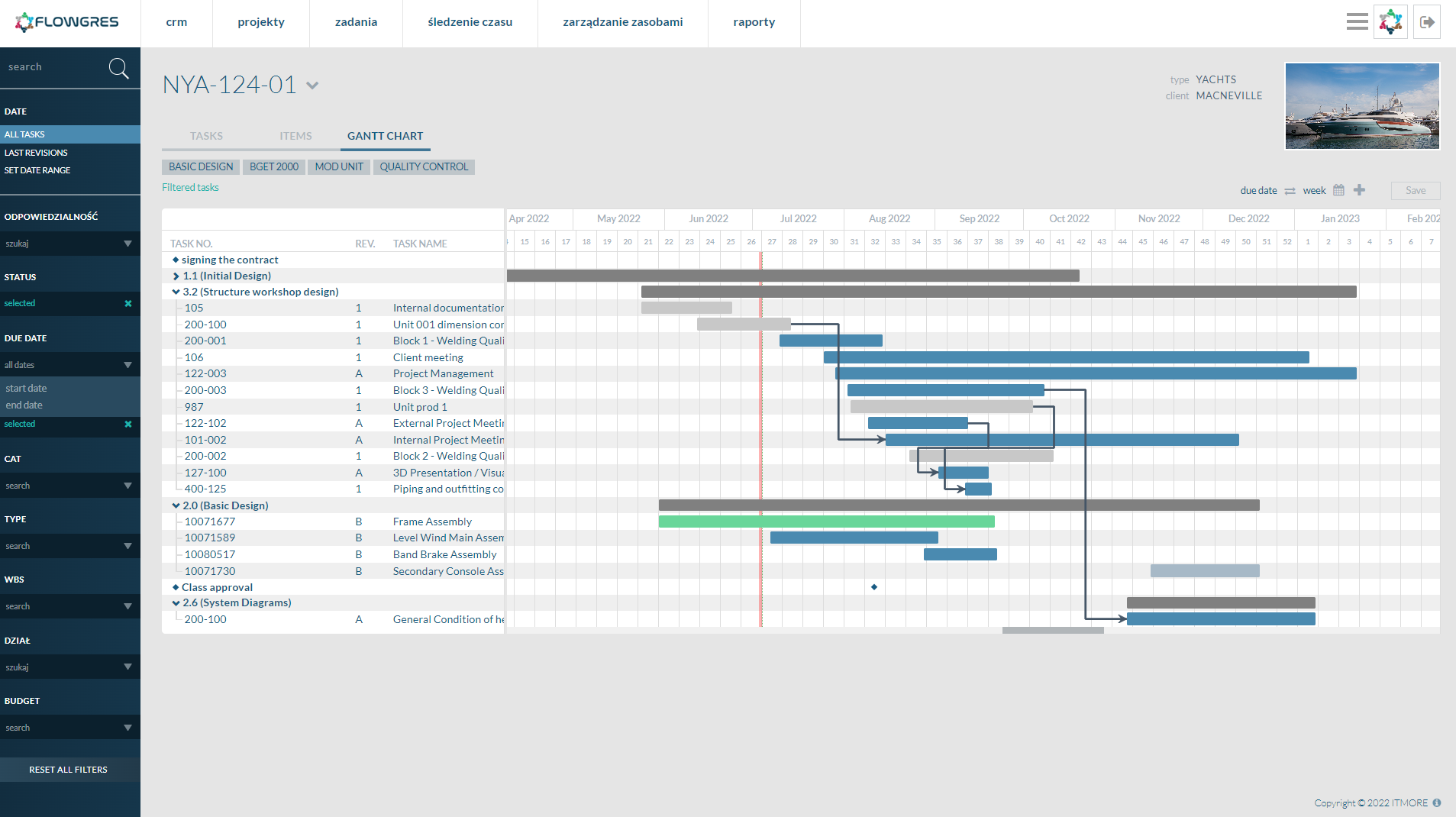
Summary
Project management throughout its entire cycle, from planning, through implementation, to completion in accordance with the expectations and assumptions, is a process that requires attention and focus on operating according to established guidelines. The scope, budget, quality, risk, benefits, and time force the persons responsible for the project to undergo constant control.
It is needed to pay attention to the aspect of time and making co-workers aware of it when it comes to planning and making assessments.
Tools such as Flowgres and the Gantt chart allow us to monitor the company's progress and verify that every process is going as planned.
Bibliography:
Eliyahu M. Goldratt, Łańcuch krytyczny, Wydawnictwo MINT Books, Warszawa 2009.

